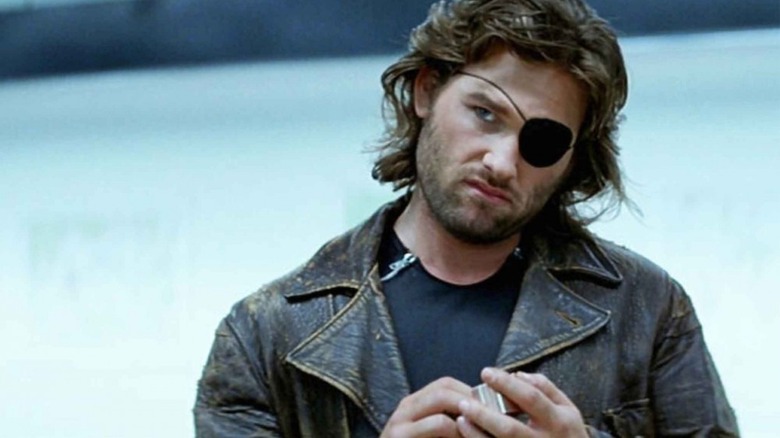AVCO Embassy Pictures
In the visionary 1981 sci-fi film “Escape from New York” directed by John Carpenter, a unique concept unfolds. The narrative is set in the not-so-distant future of 1997, where crime rates have surged by a staggering 400%. Instead of curbing the crime in New York City, the government opts to construct walls around Manhattan island, converting the entire city into a colossal prison. Inside this prison, there are no law enforcement officers, only armed guards and booby-trapped bridges to keep the inmates in. Anyone found guilty of a severe crime is exiled into this prison, left to survive on their own.
The plot thickens when Air Force One is brought down, and the President’s escape pod crash-lands within the confines of New York Prison. The President, portrayed by Donald Pleasance, finds himself trapped! The notorious criminal, Snake Plissken, played by Kurt Russell, is arrested for theft. The cunning Police Commissioner, portrayed by Lee Van Cleef, offers Snake a deal. If Snake agrees to infiltrate the prison and rescue the President, his criminal record will be wiped clean. To ensure Snake’s compliance, a bomb is implanted in his neck, set to detonate if he fails to save the President. Snake, a deeply cynical character, is repulsed by the idea of playing the hero. His character arc does not lead to a transformation into a more heroic figure by the movie’s end.
John Carpenter has always been vocal about his admiration for classic Westerns. He perceives Snake Plissken as a character akin to the hardened heroes of the old Westerns. Kurt Russell seemed to share this sentiment about his character and took it a step further by modeling his performance after Clint Eastwood. This decision was solidified when Russell found out that Lee Van Cleef, a frequent co-star of Eastwood, was part of the cast. Russell discussed his approach to the character in an interview with The Escape from New York and L.A. Page.
Snake Eastwood

AVCO Embassy Pictures
Whitney Scott Bain, the interviewer, had an extensive conversation with Russell about his character, Plissken. The discussion eventually led to inquiries about Snake’s distinctive voice. Snake’s dialogue is delivered with a gruff contempt, never raising his voice but always seething with scorn. Russell confessed that his portrayal was a direct impersonation of Clint Eastwood, especially Eastwood’s voice in “For a Few Dollars More” (1965) and “The Good, the Bad, and the Ugly” (1966), movies where Eastwood starred alongside Lee Van Cleef. Russell stated:
“I was attempting to discover Snake’s voice before we began shooting, and John informed me that we had just cast Lee Van Cleef as Bob Hauk. I thought, since Clint Eastwood made numerous films with him and helped him rise to stardom, it could work for me as well. So, I worked on Snake’s version of Eastwood. He’s quieter than Eastwood, sometimes so quiet, you can barely hear what he says.”
Anyone familiar with Clint Eastwood’s performances in “Dollars” and “Ugly” would likely recognize what Russell was aiming for. Eastwood’s on-screen persona is iconic, and Russell was undoubtedly emulating it. Even without Lee Van Cleef’s presence in the film, this would be evident. It’s far from being a secret. Van Cleef’s involvement in the film certainly drew parallels.
However, when Russell was asked to name his favorite actors, he diplomatically expressed his admiration for all actors due to the nature of their craft. He shared that as a viewer, he enjoys all films. Having been a professional actor since the age of 12, Russell knows how to maintain a balanced and positive perspective on Hollywood. He would certainly not want to publicly express favoritism or disdain towards any actor. What is certain is his fondness for working with John Carpenter, as they have collaborated on five films.
Credit: www.slashfilm.com


